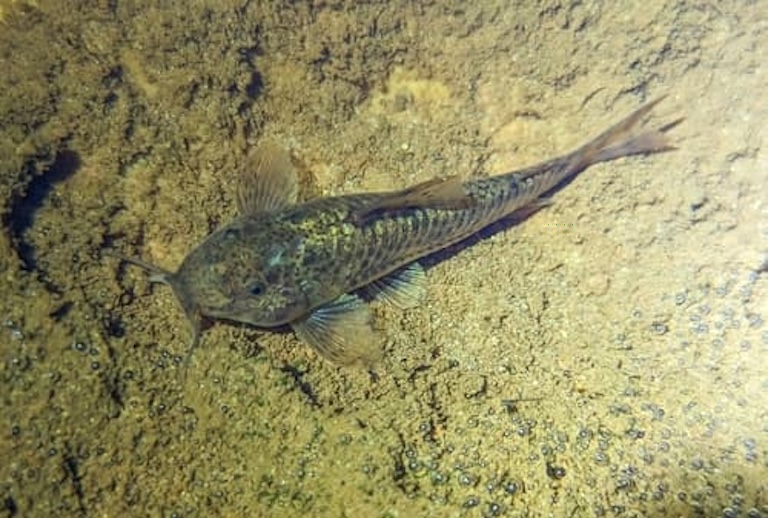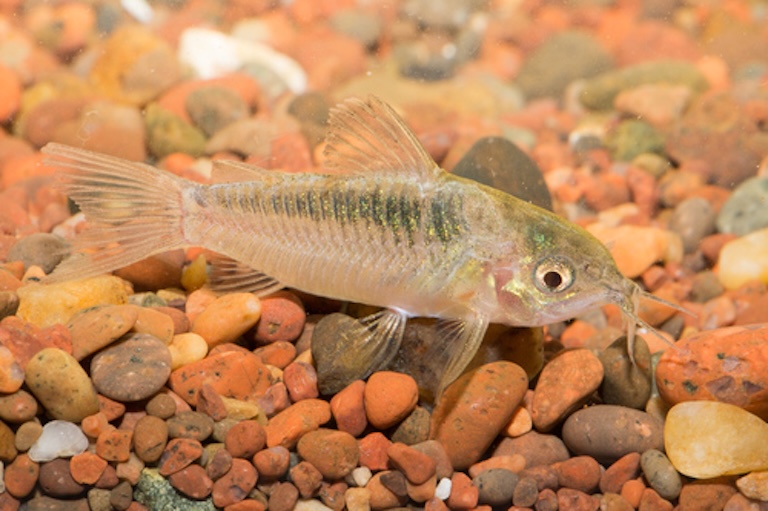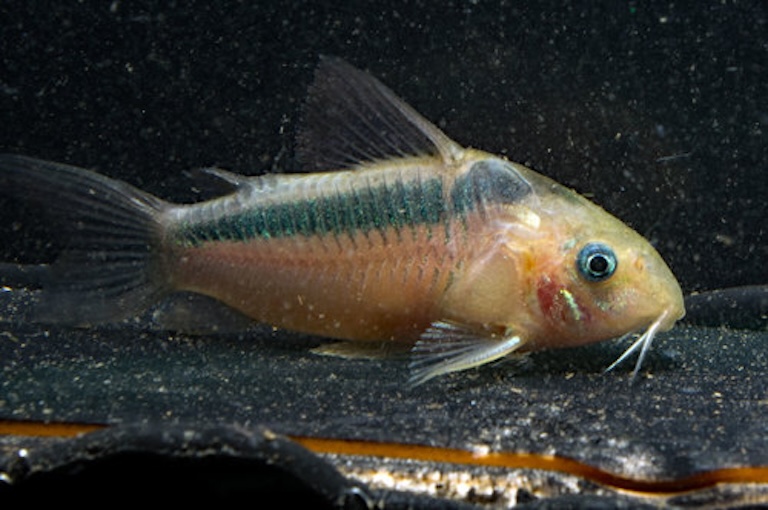Xingu Corydoras Profile
The Xingu River is a shallow yet wide waterway with lots of light, and as such is host to a number of endemic aquatic species including many that have redefined the hobby aquarium trade.
One such little rascal is a well-armoured Siluriform known as the Xingu Corydoras, or Xingu Cory, for short.

Xingu Corydoras Facts Overview
| Habitat: | Tropical freshwater |
| Location: | Upper Xingu River, Brazil |
| Lifespan: | Up to 15 years |
| Size: | Up to 5 cm (2 inches) long |
| Weight: | Not found |
| Colour: | Creamy to brown base colour with pretty dark spots |
| Diet: | Omnivorous, invertebrates and algae, mostly bottom-dwelling insects |
| Predators: | Larger fish, rays |
| Top Speed: | Not recorded |
| No. of Species: | 1 |
| Conservation Status: | Least Concern |
Xingu Cories are small and charming little catfish from Brazil, whose charisma and low-maintenance lifestyles have made them popular in home aquariums.
They’re well-behaved, pretty, and no-nonsense fish, with surprising protective adaptations as well as incredibly sensitive noses.
They aren’t well assessed in the wild, so could turn out to be in trouble, but captive programs might be the solution, if they can be figured out in time.
Interesting Xingu Corydoras Facts
1. They’re Siluriforms
The Welsh are an admirably thick-skinned people, by way of the immense and unrelenting selective pressure of bullying by rest of the UK.
One very subtle jab comes in the form of an order of animals, known as Siluriformes – a word that can trace its origins to a savage warrior tribe from Wales, the Silures. These guys effectively held off our Roman invaders and even defeated the Second Legion. Tacitus described them as “Changed neither by cruelty nor by clemency”.
Unfortunately for this charismatic tribe, their historic territory is now the site of Cardiff, which is technically just as savage but in a much less romantic way.
And there’s some irony in that, because Cardiffers would be much more deserving of the title when grouping a meaty yet visually unappealing order of nocturnal bottom feeders (jk, Wales, sorry).
Anyway, the Siluriformes are the Catfish, and while we commonly think of catfish as being those slippery mud sausages Americans eat, they also range into the petite and pretty, as seen in the Xingu Corydoras, or Cories.

2. They’re awake in the daytime
Most catfishes are, as the most savage of Cardiff residents, nocturnal. But not this one! At least not entirely. In fact, the cories are an exception to this theme, as they’re all quite active in the daytime.
This is fortunate for the cories, since they‘re very popular in home tanks, and far more likely to be fed and bothered during the waking hours of their owners.
3. They’re “Perfect Citizens”
These fish are said to be very well behaved in their little captive homes, and since they come in a variety of colours too, they’re very well received all over the world.
Even during spawning they show little to no sign of aggression, and their armour means they’re not generally involved in aquatic bullying from either the receiving or giving side. 1
4. They can breathe air
Catfish are well adapted to the muddy sediment and so are prone to living in low oxygen habitats too. When the oxygen is too low in the water they’re foraging, they come up to the surface to take a gulp of atmospheric air and head back down.
This air breathing adaptation is so incredibly cool, and ties into the string of adaptations that led our ancestors out of the water in the first place. Unfortunately for the catfish, it doesn’t have the flexible shoulder joint our ancestors had, so it’s far less likely to one day become a politician. 2

5. They’re sensitive
Corydoras are well armoured animals, and this is about their only defence against predation. As mentioned, they are not naturally aggressive and don’t tend to eat fish at all, though they will scavenge meat from carcasses if they’re available.
As is typical of catfish, they have long barbels dangling from their mouths, and these are sensory organs developed to potter about in the sediment looking for loot.
These catfish “Whiskers” are not covered in scales, and provide tactile feedback, but they’re also sensitive to pH levels in the water. In fact, they can be so sensitive that they can pick up the acidity from the CO2 emitted by the respiration of a worm in the mud! 3
6. They’re venomous!
If armour and pacifism isn’t cutting it, this species – along with numerous other species in the genus -has a set of spines attached to a venom gland at their base.
This venom isn’t said to be all that dangerous, and can cause irritation and mild pain to a human, but is presumably an effective deterrent against largfer fish who might try to eat them.
Unfortunately, this lack of pain in humans might result in the little fish’s depletion in the wild if pet trade practices aren’t improved. 4
7. They’re possibly declining in the wild
As with any popular wild animal, this species is at risk of overharvesting for the pet trade. Unfortunately, there seem to be only three species of cory that can be easily and sustainably bred in captivity, and the Xingu isn’t yet one of them.
The species is currently of Least Concern, though the population trends aren’t known. In fact, there’s very little assessment information to go on as yet. Captive breeding would no doubt save the species, and there are some who have succeeded in it, so with any luck this species will be protracted by cheaper and more sustainable production. 5 6
Xingu Corydoras Fact-File Summary
Scientific Classification
| Kingdom: | Animalia |
| Phylum: | Chordata |
| Class: | Actinopterygii |
| Order: | Siluriformes |
| Family: | Calichthyidae |
| Genus: | Corydoras |
| Species Name: | xinguensis |
Fact Sources & References
- , “Xingu cory”, Dan’s Fish.
- Pineda et al. (2020), “Social dynamics obscure the effect of temperature on air breathing in Corydoras catfish”, National Library of Medicine.
- Ed Yong (2014), “The Only Way To Hide From A Sea Catfish Is To Stop Breathing”, National Geographic.
- (2017,), “Xingu Cory (Corydoras xinguensis)”, The Aquarium Wiki.
- Mark Bryson, “Breeding Corydoras xinguensis”, scotcat.com.
- (2018), “Coridora”, iucnredlist.
